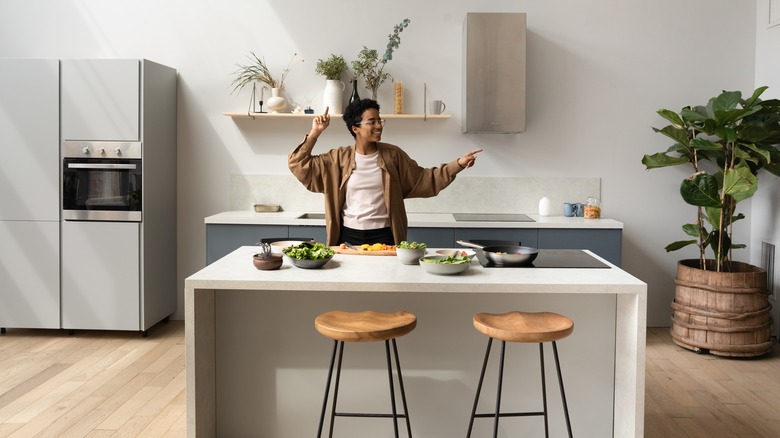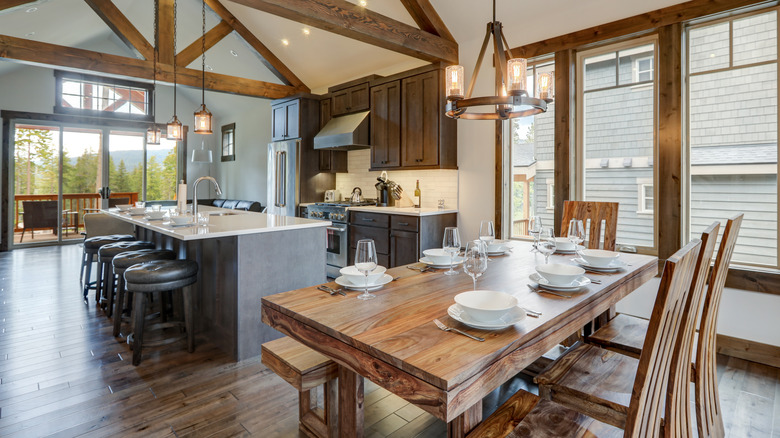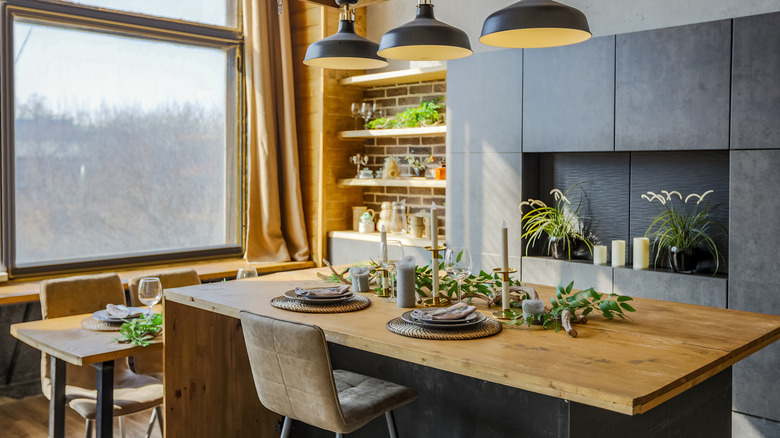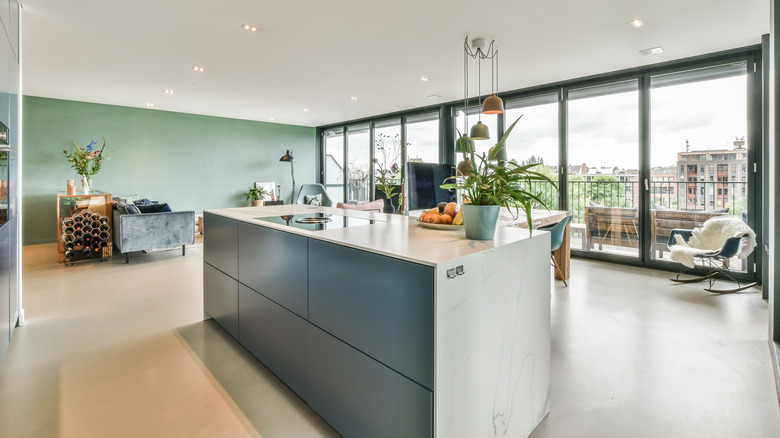Why Having A Large Kitchen Island May Decrease The Value Of Your Home
Aside from the obvious practical benefit of providing additional countertop space, large kitchen islands can make a brilliant focal point in an open-plan kitchen and living area and create a central place for family and friends to gather around and socialize. But that doesn't necessarily mean they're destined to boost the desirability of every home.
A costly addition, Home Advisor suggests that a ready-made kitchen island could cost up to around $2,000, while the price of more swanky custom models can range from $3,000 to $10,000, depending on the chosen built-in features. And remember — that doesn't include the installation costs, which will have to include hiring a plumber and electrician if your island has been fitted with a sink or stovetop.
So, before you set the wheels in motion for making your statement kitchen island a costly reality, it's worth making sure that there's no way it'll come back to bite the real estate value of your abode when you eventually decide to sell.
Losing out on living area space
Adding a kitchen island is popular amongst homeowners who have knocked down the wall between their kitchen and living room to create a larger, open-plan space. Clearly, whether you've got a galley kitchen or just a particularly pokey one with little room to maneuver, knocking through is a great way to make it more usable. But according to Laurysen, if adding an island would cause the kitchen to significantly eat into the living area, then it's probably not worth doing.
This idea of an island potentially causing too much overlap in your open-plan room is definitely more of an issue in city apartments and houses where space is generally more limited. In a larger country home with a big open-plan kitchen, living, and dining space, adding an island is typically easier and can be a great way to bridge the different zones together and give the room a more connected feel.
Making a small kitchen feel claustrophobic
In any sized kitchen area, it's important to make sure there's a roughly even balance between kitchen fixtures and usable floor space. For example, putting a large island in the middle of a really big open-plan area with lots of floor space will help ensure it doesn't feel barren. But if you've got a smaller space to work with, picking an island that's even slightly too big will create a disproportionate balance between the floor and fixtures, and the whole room will feel cluttered and claustrophobic.
Of course, you do have the option to decrease the size of your island, but according to Laurysen, it's widely recognized that a kitchen island needs to be four feet long by two feet wide at the very minimum in order for it to be a truly beneficial addition. So if you can't accommodate an island of this size, it's potentially not worth the money and effort and could make your home less desirable to future buyers.
Disrupting the workflow of the space
If adding an island is going to cause awkward pile-ups whenever there's more than one person using the kitchen, then it's not worth having one. It's important to remember that your kitchen island will definitely function as a work area and possibly even a seating area if you have incorporated a breakfast bar and stools — so there needs to be more space around it than you may have initially expected. In fact, for a kitchen island to properly fit in a space, the National Kitchen and Bath Association (NKBA) recommends that there needs to be at least 42 inches of floor space on either side (via WF Cabinetry).
Also, will your island get in the way of the famous kitchen work triangle? A design rule dating back as far as the 1920s, the kitchen work triangle is a reference to the imaginary lines that connect the sink, stovetop, and fridge. As three of the most commonly used areas when cooking, it's still a commonly held belief that the most efficient kitchens have clear paths between each of these areas. So if your kitchen is laid out in a way that means adding an island would disrupt this layout, it's probably worth rethinking.



